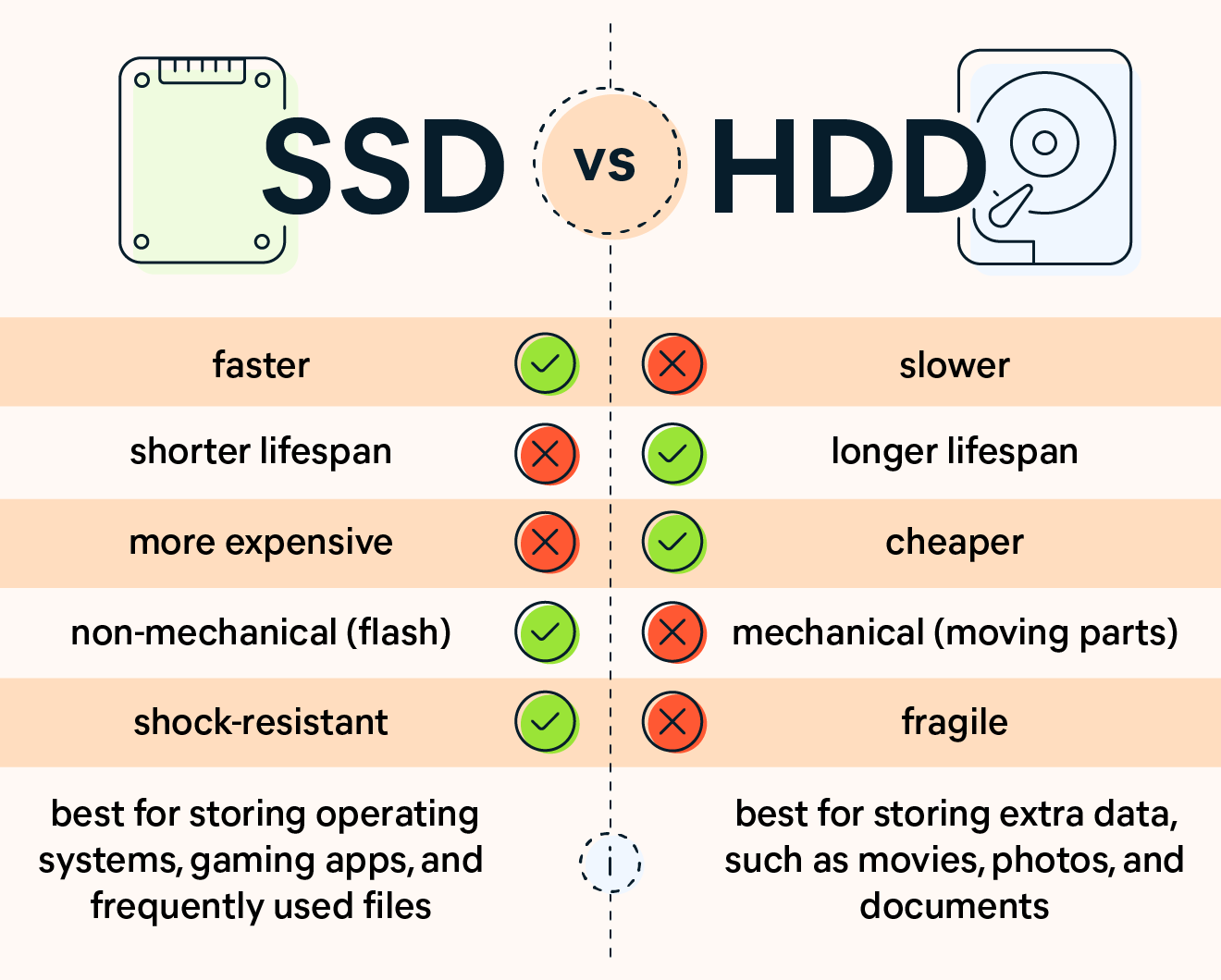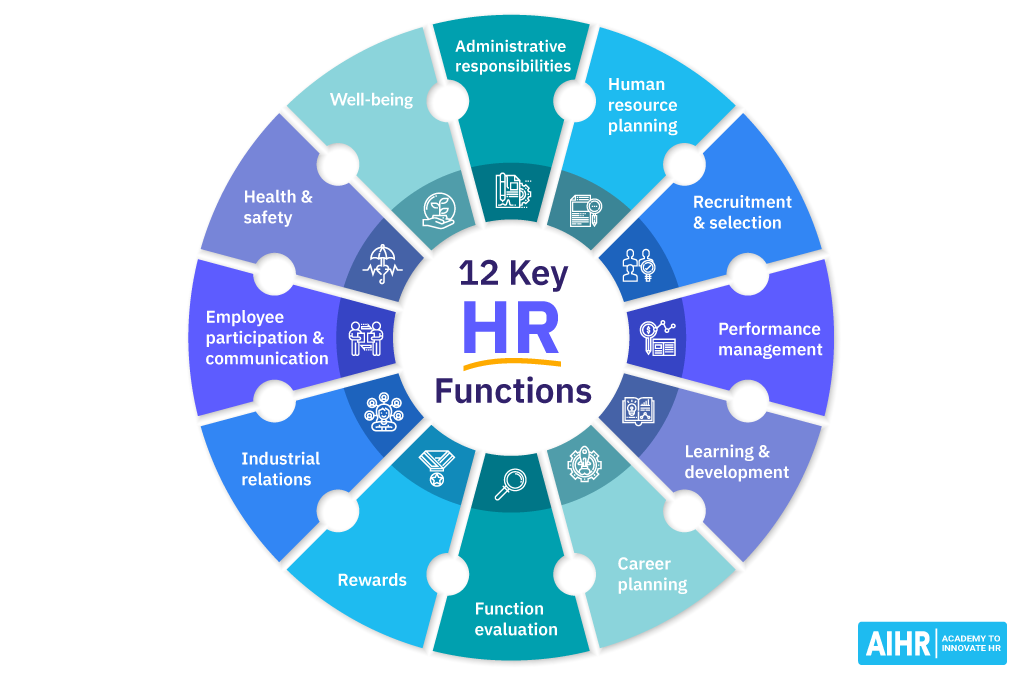
How to Communicate Effectively
Verbal Communication and Conversation
Your professional success depends on having advanced people (a.k.a. “soft”) skills because most jobs require you to talk to people. Key among these is skill in speaking to and conversing with others in person. Retail sales, for instance, requires the ability to listen carefully to what a customer says they want and “read” their nonverbals to determine what exactly to say and how to say it in order to close the deal with a purchase.
Aside from a handful of jobs with minimal human interaction (Gillett, 2016), the vast majority require advanced soft skills to deal effectively with customers or clients, coworkers, managers, and other stakeholders. Though we are not born with them, everyone has the capacity to learn, develop, practice, and apply verbal and nonverbal skills to benefit those audiences, their company as a whole, and themselves.
You have certainly participated in countless conversations throughout your life, and the process of how to conduct a conversation may seem so obvious that it needs no explanation. Still, you can tell that some are better than others at conversation and some argue that technology is preventing many from developing these skills, so it is worth breaking down how an effective communicator approaches the art of conversation. A skilled professional knows when to speak, when to go silent and listen, as well as when stop speaking before the audience stops listening.
Further, understanding conversation provides a solid foundation for this guide’s crucial advice on job interviews (see below), which follow similar ritual patterns and have their own set of expectations. Though these expectations may differ depending on the field, level, knowledge, and experience, they generally follow the five steps of a basic conversation discussed in this section. First, however, it is worth examining the voice as the preeminent communication channel, how to refine our interpersonal skills in the face of the stunting effects of problem technology use, and how to use voice-only technology effectively.
Before diving into these topics, however, let’s review what face-to-face meetings are all about according to the Table 1 channel selection guide above.
Table 1: In-Person Meetings at a Glance
| Channel | Advantages | Disadvantages | Expectations | Appropriate Use |
|---|---|---|---|---|
| In-person conversation |
|
|
|
|
Your Voice as Your Most Essential Communication Tool
We had hundreds of thousands of years to develop our voice as a communication tool until we added writing to the channel mix relatively recently about 5,000 years ago. Your voice continues to enjoy a privileged place in your communication toolbox, being the first one you use in your infancy when you cry for food and attention the moment you are born. Since then, you have developed richly expressive verbal skills that make your voice your most essential communication tool.
Your voice has qualities that cannot be communicated in written form, and you use these to your advantage when interacting with colleagues. If you are sending a general informative message to all employees, an email may serve you well, but if you are honoring an employee for receiving an industry award, your voice conveys your heartfelt congratulations much better than the written word (Business Communication for Success, 2015, 16.5).
When trying to make a point very clearly and emphatically, slowing down your pace so that the listener focuses on each word, raising your volume to jolt the listener into paying closer attention, and dropping your pitch to sound more authoritative all have advantages over using all-caps, bold, italics, and/or underlining in an email, which altogether can look angry rather than emphatic. For sheer expressiveness and precision in communicating meaning, your voice is your go-to communication tool.
How your voice quality, volume, and pitch affect your listener’s understanding of the message’s the content is instrumental especially for persuasive messages. Delivering a message with a happy and enthusiastic tone will have a much different impact than serious or sad tones. In most business situations, it is appropriate to speak with some level of formality, yet avoid sounding stilted or arrogant. Your voice volume should be normal but ensure your listeners can hear you. If your audience includes English learners, speaking louder and shouting do not help them understand you any better compared with accessible word choices delivered in a normal tone (see above).
Use simple words and short, active-voice sentences of 10–20 words, as well as avoid idioms (figures of speech) that do not translate literally. Pitch refers to the frequency of your voice, which you can raise or lower for effect. A pleasant, natural voice will have some variation in pitch – raised for lighthearted quips and lower for serious statements – to communicate nuances of meaning and keep the listener engaged. A speaker with the flat pitch of a robotic-sounding monotone voice tends to bore their listeners because they sound bored themselves (Business Communication for Success, 2015, 15.2).
Modulating your volume and pitch helps communicate the emotional spin of your messages, making the spoken communication channel an incredibly rich one.
Why, then, is the voice falling into disuse? Why are so many people afraid of using their voice for public speaking and even shy away from one-on-one interaction? Though you probably recognize the importance of literacy and numeracy to your academic and professional success, your schooling probably has not impressed upon you the importance of oracy, and your reliance on writing technology such as texting on your smartphone has not helped either.
If you are encountering this word for the first time, oracy is skill in speaking and reasoning aloud, such as using evidence to make a persuasive argument, as well as collaborative teamwork through conversation. This is what employers expect employees to do, but there is little direct focus on it in school curriculum, and hence some anxiety around group speaking into the high-school and college years (Mercer, Ahmed, & Warwick, 2014; McKenna, 2017). For the sake of your future employability, then, let’s focus on Conversation 101 by breaking down how we achieve goals through dialogue.
The Five Parts of Conversations
Conversation is one of the main ways we interact in the business environment and yet it is highly susceptible to miscommunication and misunderstandings. Our everyday familiarity with conversations often makes us blind to the subtle changes that take place during the course of a conversation. Examining it will help you to consider its components, predict the next turn, anticipate an opening or closing, and make you a better conversationalist. Steven Beebe, Susan Beebe, and Mark Redmond (2002) break conversation down into five stages that we will adapt here for our discussion.
1. Initiation
As the first stage of conversation, initiation requires you to be open to interact and perhaps use small talk to prime yourselves for the intended topic. You may communicate openness with nonverbal signals such as approaching someone, stopping four feet away, facing them, making eye contact, and smiling. When a degree of unfamiliarity comes between the two speakers, small talk helps “break the ice” to clear a path toward the topic at hand.
Asking how they are doing, a casual reference to the weather (“Nice day, eh”?) or a brief back-and-forth about the weekend requires someone to begin the exchange. For the very shy, this may trigger some anxiety whereas extraverts delight in this stage, and “ambiverts” (e.g., natural introverts who have learned to play the extravert game) do it in recognition of its necessity (Bradberry, 2016). If status and hierarchical relationships are a factor, cultural norms may determine who speaks when. Usually, however, initiation just requires a willingness to engage in conversation and a purpose – something to talk about after clearing the small-talk hurdle.
2. Preview
The preview (a.k.a. “feedforward”) verbally or nonverbally indicates the conversation topic. A word or two in the subject line of an email performs the same job, but in conversation this can be done as easily as just summarizing the topic in a few words (e.g., Can I ask you about how I can minimize my tax liability? or Let’s talk about some basic heavy-equipment safety guidelines before we get started). People are naturally curious and also seek certainty, so a preview conveniently reduces uncertainty by taking a direct approach to signal the speaker’s intent.
A general reference to a topic may also approach a topic indirectly, allowing the recipient to either pick up on the topic and to engage in the discussion or to redirect the conversation away from a topic they are not ready to talk about. For instance, a manager needing to talk to an employee about being late for work too often might start off by saying, “That was some nightmare traffic on the highway this morning, eh”?
Depending on the employee’s response, the manager could then say what they do to get to work on time, suggesting that the employee should do the same. To reinforce the point, the manager could finally explain that continuing to arrive late will affect the employee’s job security. The savvy communicator would be able to infer from the initial question about traffic where the manager’s going with this line of questioning and may even begin to offer up a convincing excuse for why they are late and suggest a compromise such as a plan to stay later or make up the lost hours by working from home on the weekend.
3. Business
You get down to business when you reinforce the goal orientation of the conversation. In workplace communication, we often have a specific goal or series of points to address, but we cannot lose sight of the relationship messages within the discussion of content. You may signal to your conversation partner that you have three points you need to cover, much like outlining an agenda at a meeting. This may sound formal at first, but in listening to casual conversations, you will often find a natural but unacknowledged list of subtopics leading to a central point where the conversational partners arrive. By clearly articulating the main points, however, you outline the conversation’s parameters to keep it efficiently on track rather than prone to digress from the main point.
4. Feedback
Similar to the preview stage, this feedback allows speakers to clarify, restate, or discuss the talking points to arrive at mutual understanding. In some cultures the points and their feedback may recycle several times, which may sound repetitious in the West where speakers typically prefer to get to the point and move quickly to the conclusion once they are achieved understanding. If so, then a simple “Are we good”? might be all that is necessary at the feedback stage.
Communication across cultures, on the other hand, may require additional cycles of statement and restatement to ensure understanding, as well as reinforcement of the speakers’ relationship. Time may be money in some cultures, but spending time is a sign of respect in cultures with rigid social hierarchies. The feedback stage offers an opportunity to make sure the information exchange was successful the first time. Failure to attend to this stage can lead to the need for additional interactions, reducing efficiency over time.
5. Closing
Accepting feedback on both sides of the conversation often signals the transition to the conversation’s conclusion. Closings mirror the initiation stage in that they can be signaled verbally (e.g., “Okay, thanks! Bye”) or nonverbally, such as stepping back and turning your feet and body in the direction of where you are about to go next in preparation to disengage while still facing and speaking with the other.
Sometimes a speaker introduces new information in the conclusion, which can start the process all over again. If words like “in conclusion” or “okay, one last thing” are used, a set of expectations is now at play and the listener expects a conclusion in the very near future. If the speaker continues to recycle at this point, the listener’s patience will be stretched and frustration sets in. They will have mentally shifted to the next order of business, so this transition must be negotiated successfully to maintain good relations between speakers.
Mentioning a time, date, or place for future communication clearly signals that the conversation, although currently concluded, will continue later. “I am just heading to a meeting right now but I will catch you back on the fifth floor tomorrow afternoon, K”? for instance, allows you to respectfully disengage (Business Communication for Success, 2015, 16.5).
Improving Your Conversation Skills in the Smartphone Era
If you prefer to text rather than talk to people most of the time because that is how you have (and everyone else has) been doing it throughout high school and even in college, you will probably find yourself at a disadvantage when entering the workforce. The reason is twofold: (1) When you enter the working world, you join several generations of adults who grew up without smartphones and therefore tend to prefer talking over texting because it is a tried, tested, and true way to efficiently communicate understanding.
Managers, coworkers, customers, and other stakeholders come with high expectations for the quality of conversational skill in the people they interact with, and have little patience for those who are years behind where they should be in basic oracy (see below for more on oracy). You could be addicted to technology, which negatively affects your ability to interact with people in person according to a growing body of research (Andrew-Gee, 2018; Smith, Robinson, & Segal, 2018; Brandon, 2018). Why talk to people when sending a text is just so easy and comfortable?
In her book Reclaiming Conversation: The Power of Talk in a Digital Age (2015), psychologist Sherry Turkle draws on clinical research to show how profoundly dissatisfied with ourselves and each other technology has made us. Smartphones and social media apps promise to connect us more but effectively isolate us. After a decade of smartphone use, teenagers whose 10-hour-per-day addiction to screens, preference for texting over talking, and habit of filling every idle moment with media consumption arrive at college with under-developed skills in conversation, empathy, patience, and self-reflection.
When teens use technology to shield themselves from the countless awkward, embarrassing, and regrettable in-person interactions that, by a slow learning process, lead eventually to social competence and confidence, they enter the workforce in a state of arrested development. “Adulting” becomes a terrifying prospect compared with the protective comfort zone of the screen. Turkle’s guide offers an antidote to the socially stunting effects of technology.
If anything in the above paragraphs sounds true to life, the onus rests largely on you to improve your conversation skills with all the advice that is available (ironically) on the very devices in question. For instance, we can draw on a very accessible TEDtalk by Celeste Headlee, a talk-radio host and author of We Need to Talk: How to Have Conversations That Matter (2017). We will adapt her well-viewed speech 10 Ways to Have a Better Conversation (2016) for our own purposes below and build on them with a few points of our own.
- Be Present: Devote your undivided attention to the person you are speaking with and do not multitask. You will not have to pretend to pay attention by nodding and making eye contact if you are doing that anyway by actually paying attention. The worst offenders are those to whip out their phone and engage with it rather than the people around them, called “phubbing” (for “phone snubbing”) (Ducharme, 2018). Though you may feel that you can get away with phubbing in your college classes by discreetly hiding your cell phone under your desk, your instructor knows exactly what you are doing when all your attention is on your lap. The rudeness of it will likely get you slightly blacklisted – or fully blacklisted if you do it too much.
- Be prepared to learn: A conversation is a dialogue, not a monologue where you simply unload your opinion on someone and receive nothing in return except for the satisfaction of dominating them with it. In certain situations, such as a TEDtalk itself, you give up your right to speak because of the faith that you will learn much more by listening to a wise speaker who needs time to get their points across.
- Ask open-ended questions: The more vague your questions are (starting with the 5 Ws + H), the more freedom you give your conversation partner to answer on their own terms, whereas very specific questions limit the possible answers. If you ask “How did that make you feel”? for instance, you will get a more expressive answer than if you limited your speaker to a yes or no answer with a question like “Did that make you happy”?
- Go with the flow: Respond to your conversation partner’s main points rather than with some digressive story you were reminded of by one of their minor points. When you respond in that way, it reveals that you have not been listening past the part that inspired the barely relevant thing you feel contributes to the conversation, though it really does not move the conversation along so much as derail it.
- Admit to not knowing: Make your confession of ignorance an opportunity to learn rather than claim to know something you do not.
- Honor the uniqueness of their experience: When the speaker relates something that happened to them, resist the urge to make it about you by equating their experience with yours. If they are talking about grieving a death in the family, for instance, do not dishonor that information share by responding with how you felt when your dog died. It is not the same.
- Cut yourself off before repeating yourself: If you have only one point to make, “hit it and quit it” rather than spin your wheels saying the same thing over and over, even if you change the words.
- Stay out of the weeds: Rather than struggle to offer up all the details (the names, places, dates, etc.) and digress on minutiae, focus on your main points.
- Listen: A conversation is a dialogue, not a monologue, and therefore requires that you actively pay attention to what the speaker says in order to understand it rather than to merely reply to it (see above for more on active listening).
- Be brief: People are busy and have things to do, so if your conversation detains them for longer than they have time for, you will stretch their patience. As Headlee says, “A good conversation is like a miniskirt: short enough to retain interest, but long enough to cover the subject”.
Headlee concludes that these tips are all variations on being interested in what people have to teach you (TED, 2016). If you add the following to Headlee’s advice, you stand a good chance of improving your conversation skills.
Mirror the Speaker
You may have occasionally caught yourself automatically imitating your conversation partner’s posture, facial expression, and manner of speaking. When they look relaxed or lean in, talk slow because they are calm or talk fast because they are in a rush, or widen their eyes with excitement, you follow suit in every case. Coined the “chameleon effect” by psychologists, mirroring is unconscious physical behavior motivated by our desire to fit in so our conversation partner identifies with and likes us (Chartrand & Bargh, 1999). It supports the cliché that imitation is the highest form of flattery, and happens not only for romantic partners but also for good friends and even workplace colleagues.
Though it happens unconsciously, mirroring deliberately has been found to be especially effective as a sales technique and in job interviews, though only if the person being imitated does not notice the imitator doing it. If you can be subtle and natural about it, intentional mirroring forces you to read your conversation partner’s verbal and nonverbal messages closely. Done effectively, mirroring benefits both speakers by building the trust and rapport necessary to collaborate effectively or close a deal (Shellenbarger, 2016).
Correctly Pronounce Words and Names
Though it is difficult for learners of English to get the hang of it, take care to carefully pronounce your words. State them the way native English speaker tend to speak them, especially those whose job is to speak, such as radio hosts and actors. An excellent strategy is to watch movies with subtitles to associate the written words with those heard, and then to imitate the pronunciation. When you get more familiar with the language, you can move up to listening to the radio, such as the CBC, and continue to work on the accent at a normal conversational pace without subtitles.
Even native English speakers should be careful with pronunciation, especially with words they rarely hear, if ever. Mispronunciation can negatively impact your reputation or perceived credibility. Instead of using complicated words that may trip you up, choose a simple phrase if you can, or learn to pronounce the word correctly before using it in a formal interactive setting (Business Communication for Success, 2015, 19.4).
If you think you will stumble over a word like archipelago, for instance, just use a synonymous phrase such as island chain.
The importance of pronunciation is nowhere more important than with people’s names. Some take offense to their name being mispronounced, and especially with their name being confused with a different but similar name. If someone’s name looks unpronounceable on paper, simply asking them how they prefer their name to be pronounced is better than confidently mispronouncing it.
Be careful also with where stresses go when pronouncing words. Every word with more than one syllable has stressed and unstressed syllables. We pronounce the word syllable, for instance, by stressing the first syllable (SIH) – i.e., raising our volume slightly and spending a little longer enunciating it compared with the two following unstressed syllables (lah-bul), which we enunciate quicker and quieter. Stressing the middle syllable (sih-LAH-bul) would sound strange.
Be especially careful pronouncing words you have only seen in writing. If you have only ever read the fancy word superfluous, for instance, but never heard anyone say it aloud, you would sound slightly silly pronouncing it in conversation by stressing the first syllable (SOO-per-FLOO-us) as you normally would when pronouncing the word super. Many online dictionaries such as Dictionary.com feature an audio button you can click on to hear the word pronounced correctly. In the case of superfluous, you can hear it pronounced properly with the stress on per with the other three syllables unstressed (soo-PER-floo-us).
Treat Conversations Like Volley Sports
A conversation is not a monologue where you fire words at a wall until you have nothing left to say. It is more like a game of volleyball, tennis, or ping-pong where possession of the speech right is exchanged back and forth. If it is a friendly game, the objective is to volley words for as long as it is fun or productive. This may mean asking a good question, which lobs the speech over the net to your conversation partner. They answer and can either ask you a feedback question in return or you can respond to their answer with a statement.
Every time you speak, you must set up your conversation partner to be able to respond with either a statement or question, and expect them to do the same. Conversations would be frustrating if all the other person did was either spike the ball repeatedly to score points against you so that you could never touch it (i.e., delivered a monologue where you could not get a word in edgewise), or just bounced the ball out of bounds every time you volleyed it straight to them – i.e., answered in a way that stalled the conversation, such as with one-word answers to your questions or bizarre statements you do not know how to respond to. A conversation must be a dynamic process where both sides make a determined, concerted effort to keep it going until the objective has been reached or the clock runs down.
Telephone and Voicemail
The simplest form of audio-only conversation – i.e., talk stripped of all nonverbals – is a telephone call. A phone call is advantageous whenever you need the live volley of conversation with someone to sort out details in a timely manner, but are too distant from them physically to do it in person. Some make the mistake of choosing written channels like email or text, drawing out the communication process over hours or days, to discuss matters that would take mere seconds or minutes by phone. As long as you do not need details permanently recorded in writing, phone is an expedient channel to discuss details for any busy professional.
Though you have probably talked on the phone countless times throughout your life, you may not yet have had the chance to do so professionally where the expectations for competence are much higher than in social or family contexts – so much so that some executives hire professional voice coaches to help them increase their effectiveness in phone communication.
The importance of audio communication in business and industry has increased with the availability of conference calls, voice over internet protocol (VoIP), voice-activated electronic menus, and voice-to-text dictation software such as that in the Gboard (Google keyboard) app for smartphones. We will examine below how to improve your phone game in an age where many prefer to text rather than call. First, however, let’s review what the telephone and its modern adaptations are all about according to the channel selection guide we saw in Table 1 above.
Table 2 : Telephone and its Adaptations at a Glance
| Channel | Advantages | Disadvantages | Expectations | Appropriate Use |
|---|---|---|---|---|
| Phone, VoIP, voicemail, and conference calls |
|
|
|
|
Your Voice on the Phone
When you lack the nonverbal context of your conversation partner being able to see how you say what you say, take pains to ensure that your voice accurately communicates your message. Without nonverbals, your choice of words and how you say them, including spacing or pausing, pace, rhythm, articulation, and pronunciation are more relevant than when you talk in person. Consider these five points:
- Speak slowly and articulate your words clearly. You do not have to slow down your normal pattern of speech much, but each word needs time and space to be understood or else the listener may hear words running together, losing meaning and creating opportunities for misunderstanding. For instance, numbers such as “18” may sound like “80” and vice versa if you are speaking too quickly and have an accent, which could lead to disaster if you are, say, discussing price in a six-figure real estate deal.
- Use vivid terms to create interest and communicate descriptions. As we discussed briefly earlier on the topic of using the phone to deliver bad news (see above), talking on the phone or producing an audio recording lacks an interpersonal context with the accompanying nonverbal messages. Unless you use vivid language and crisp, clear descriptions, your audience will be left to sort it out for themselves. They may create mental images that do not reflect your intended meanings and lead to miscommunication.
- Be specific. Do not assume that they will catch your specific information the first time. Repeat as necessary, especially addresses and phone numbers.
- Show consideration for others by keeping your phone conversations private. Avoid calls in a crowded elevator, for instance.
- Silence cell phones and other devices when in a meeting or eating with colleagues.
As the response from the receiver to the sender, feedback is also an essential element of phone conversations. Taking turns in the conversation can sometimes be awkward when you cannot see when your conversation partner is about to speak. With time and practice, each “speaker’s own natural, comfortable, expressive repertoire will surface” (Mayer, 1980, p. 21).
Telephone Conversation Organization
Recall from above that conversations follow a predictable five-part pattern:
- Opening
- Preview
- Business (a.k.a. talking points)
- Feedback
- Closing
Table 3 illustrates what this would sound like in a phone conversation.
Table 3: Five-Stage Telephone Conversation
| Stage | Subevents | Example |
|---|---|---|
| 1. Opening |
|
|
| 2. Preview |
|
|
| 3. Business |
|
|
| 4. Feedback |
|
|
| 5. Closing |
|
|
Leaving and Receiving Voicemail
When you phone someone but are sent to voicemail because they do not pick up, switching to monologue mode means that you can only get as far as the preview stage of the conversation structure outlined above. You’d still open by saying hello, your full name, and company. The limit on how much recording time you have (30 seconds? 60? – you may not know) and absence of feedback from the listener, however, means that you can really only say what the call is about in concise, clear terms. A long, rambling voice mail message may be cut off and you may not even know it, as well as increases the possibility for misunderstandings without being present to clarify based on your listener’s responses. Anything that needs discussion must be saved for the actual conversation, especially anything of a sensitive nature. Recording confidential information is potentially dangerous to you and others.
Add your contact information, even if you think the person already knows your phone number, and say it twice slowly so that the listener has additional time to get a pen and paper if they are still looking for them the first time you say it. Imagining you were writing down your phone number as you recite it will help you deliver it at a listener-friendly speed (Business Communication for Success, 2015, 15.2). Precise pronunciation is crucial because “60” and “16” or “90” and “19” may sound the same in a strong accent.
Be prepared to receive voicemail by recording a professional-sounding call-back message that begins after about 4–5 rings. Top professionals record a new one every morning when they begin work and include the date in it. They can thus state what their availability is throughout the day and assure the listener how quickly to expect a call back. When you receive a voicemail, return the call as soon as possible. The 24–hour rule of email does not apply with voicemail because the person who called you chose this channel deliberately expecting to discuss something with you “live” in a timely manner. With so many channels available (see above), using the phone implies a sense of urgency.
![]()





![[Resource]: Installing Webuzo on Your Nestict Cloud VPS: A Detailed Guide](https://www.blog.nestict.com/wp-content/uploads/2024/12/image.webp)
![[Resource] : Comprehensive List of Equity Bank Codes Across Kenya by Region](https://www.blog.nestict.com/wp-content/uploads/2024/12/image-5.png)



![[Continuation]: Current Challenges in Making Physics and Geography Compulsory](https://www.blog.nestict.com/wp-content/uploads/2024/12/The-universe-of-mathematics-physic-and-astronomy-its-ama…-Flickr.jpg)
![[Resource] : Why Physics and Geography Should Be Compulsory Like Mathematics in Education](https://www.blog.nestict.com/wp-content/uploads/2024/12/image.png)


![[LINKTREE] 2024 PAST PAPERS , NOTES ,RESOURCE,REVISION,EXAMINATIONS](https://www.blog.nestict.com/wp-content/uploads/2024/10/SCHM.jpeg)


![Maritime Terms, Abbreviations and Acronyms [Shipping Terms – Searchable]](https://www.blog.nestict.com/wp-content/uploads/2024/09/Container-Stowage-Stock-Illustrations-–-71-Container-Stowage-Stock-Illustrations-Vectors-Clipart-Dreamstime.jpg)
![Maritime Terms, Abbreviations and Acronyms [ Shipping Terms]](https://www.blog.nestict.com/wp-content/uploads/2024/09/image.png)








![[Explainer]: NVMe storage, SSD (SATA SSD), and HDD](https://www.blog.nestict.com/wp-content/uploads/2024/08/Laptops-are-available-with-SSDs-and-HDDs.png)














![[Updated 2024] – Passport Application FOR CHILDREN ONLY(PERSONS UNDER 18 YEARS)](https://www.blog.nestict.com/wp-content/uploads/2023/09/keppp-240x172.png)
![[Updated 2024] -Passport Application FOR ADULTS ONLY-PERSONS OVER 18 YEARS](https://www.blog.nestict.com/wp-content/uploads/2023/09/EAF-Passport-e1631045054464-400x800-1-240x172.jpg)









